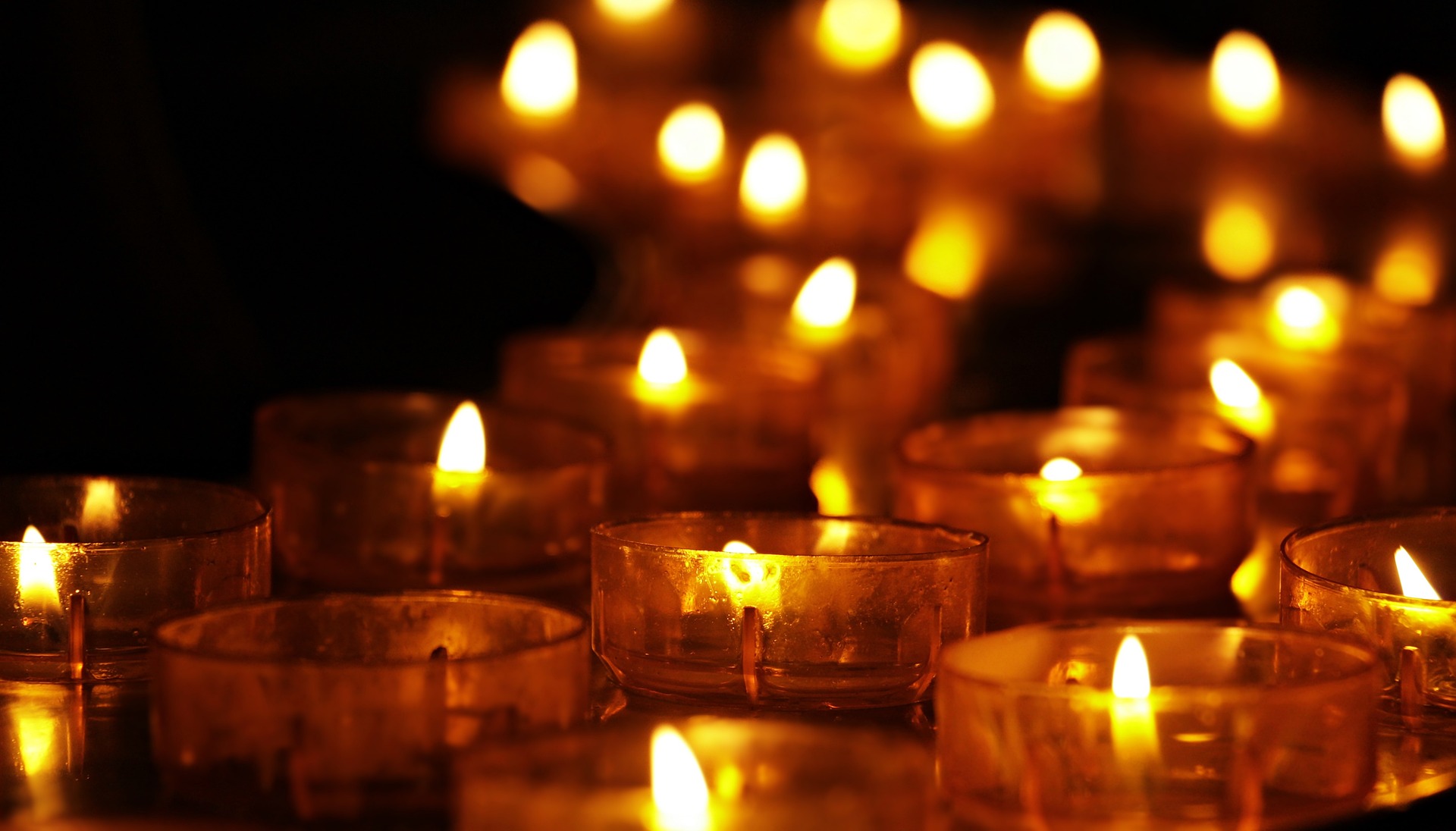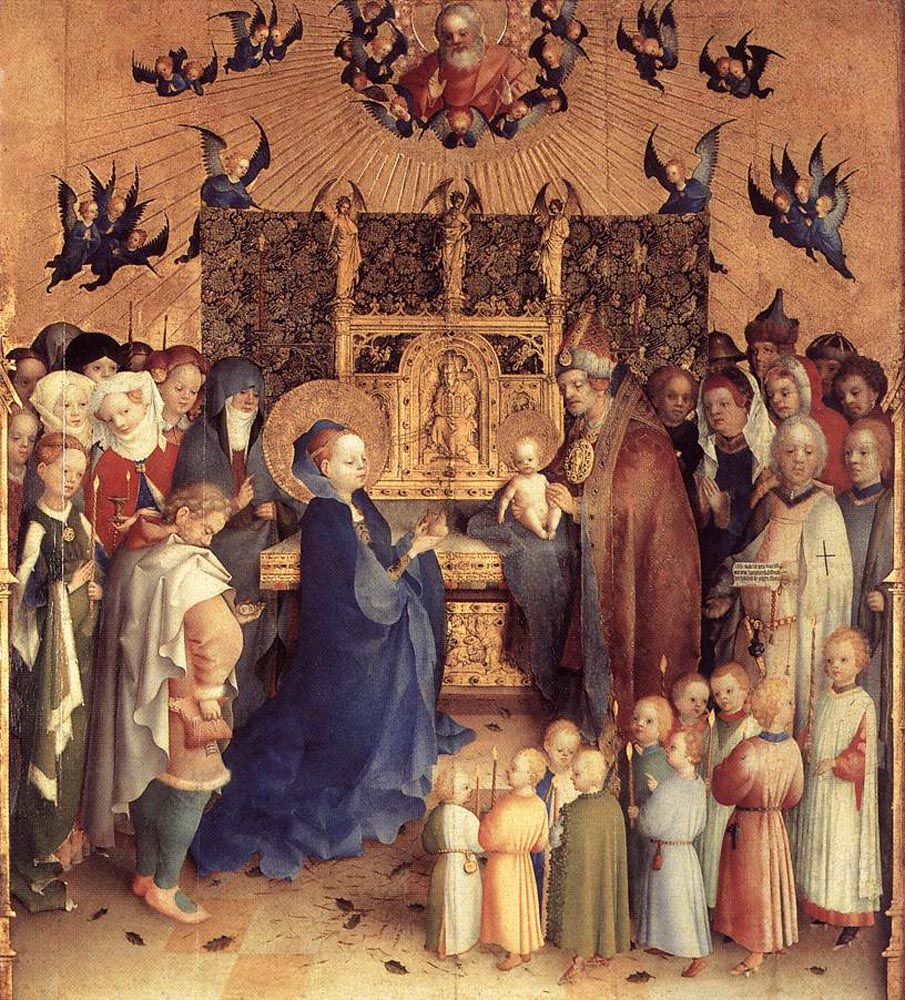What is Candlemas?
My favorite candle-lit celebration is Candlemas, celebrated on February 2.
It is the Feast of our Lord’s Presentation in the Temple, and of the Purification of the Blessed Virgin Mary. The following is a summary of the description of this Mass from the Missal used by Mother T.
“The liturgy of this Feast consists of two parts: a procession and a Mass. The procession is accompanied by chanting, which is meant to remind us of the joyous Nativity as well as of penitence (repentance for sins committed). Each person in the procession holds a consecrated candle, which, like the Easter candle, is an image of Christ, the Light of Truth who appeared in the world at the time of His Nativity.”
– Missal (published in 1949)
It is called “Candlemas” because of the custom of holding lit candles. It falls 40 days after Christmas and celebrates two things. The first is the presentation of Jesus in the Temple, 40 days after his birth (Christmas Day), according to the Law of Moses. Jesus was the first child of Mary and Joseph, and according to the Law of Moses, all first-born males (whether animal or human) must be sacrificed to God, unless another sacrifice is made as a substitution.
The second is the celebration of Mary’s purification. Once again, according to the Law of Moses, a Jewish woman was considered unclean for a certain period of time after giving birth, and was forbidden to enter the Temple during that time. After this period of impurity, the woman and her husband would usually offer a lamb in the Temple. If they could not afford a lamb, they were allowed to offer a pair of doves instead. Then the woman would be officially declared no longer unclean. Mary and Joseph, who were poor, offered two doves.
What does this mean? Literally, it means that Jesus is an offering, destined to be sacrificed on the altar, just like a sheep. But, of course, a human baby could not be offered as such; human sacrifice is strictly forbidden by God. Therefore, Jesus was presented to the Jewish priests in the temple, and two doves were offered instead of him, as a substitute sacrifice. According to Church doctrine, such a ceremony was not actually necessary because Jesus and Mary are free from all sin. In Mother T’s Missal, it is stated (in summary), “The fact that the Blessed Virgin took part in the purification ceremony according to custom, and that Christ her Son was also offered in the Holy Temple, was a sign of her humility, and of her Son’s involvement in the project of salvation.”
The Celebration of Candlemas
In the Catholic Church, there are sacraments and sacramentals, which, in brief, are visible signs of God’s grace. Catholics can partake of God’s grace through the sacraments and sacramentals. Before the Mass of Candlemas begins, the priest blesses some candles, which are then distributed to the people. These blessed candles are sacramentals. That is, the blessed candle is a visible sign of God’s favor toward us.
At this time, I will not discuss the difference between a sacrament and a sacramental, but sacramentals include, for example, holy water, blessed salt, medallions, and rosaries. They are prescribed according to the traditional teachings of the Church. Thus, a favorite coffee cup or book cannot be made into a sacramental.
Simeon’s Song “Now Lettest thou thy servant depart in peace.”
Petrus Josephus
Before the procession begins, we sing the canticle of Simeon, who was present on the day Jesus was consecrated in the temple.
This Simeon was a man who received a message from God that he would not die before he had seen the Messiah. He believed God, and waited for the Messiah until he was an old man. Simeon is often mistaken for the priest who performed the consecration of Jesus, but he was not a priest but an old man who continued to wait for the Messiah and visited the temple. When he met the Messiah, Simeon sang a song, or canticle, which can be found in Chapter 2 of the Gospel of Luke.
The Canticle of Simeon is sung every day in the evening prayer of the Divine Office, called Compline. Simeon’s prayer is sometimes thought to be “Now let me depart,” as opposed to “Now lettest thou me depart,” but the Bible does not say in which sense his words should be taken. I feel that the translation “Thou lettest thy servant go,” which sounds joyful and without the slightest doubt that the Messiah has come and that God has fulfilled His promise, is more fitting for Simeon.
Prayer of “repentance for sins” taken away
Next is the second part of the preparation for the procession. In Mother T.’s Missal, published in 1949, it is called the remembrance and repentance of sins, but in fact, this beautiful part of the liturgy is no longer included in the current form of the Candlemas procession. This is because, in the 1950s, the length of the liturgy was gradually shortened. Here is the penitential part that was cut:
Arise, O Lord, help us, and deliver us for Thy name’s sake.
We have heard, O God, with our ears: our fathers have declared to us.
Glory be to the Father, and to the Son: and to the Holy Ghost.
As it was in the beginning, is now, and ever shall be: world without end. Amen.
Arise, O Lord, help us, and deliver us for Thy name’s sake.
Candles to Light the Flame of Faith
My local church held a candlelight procession this year, and even though it was a weekday, many people attended. In his sermon, the priest of my parish said, “Imagine how bright candlelight used to appear when there was no electricity.”
When I did not know the light of Jesus, I did not even realize that I was in darkness. Candlelight also symbolizes the light of Christ that illuminates the spirit. Today, we have electric lights 24 hours a day. However, the darkness of the spirit is getting darker and darker.
At the end of the Mass, the priest said, “Light the flame of faith.” Even a seemingly insignificant light can be a great help in pitch darkness. I hope that I can keep the flame of faith burning in my heart.

